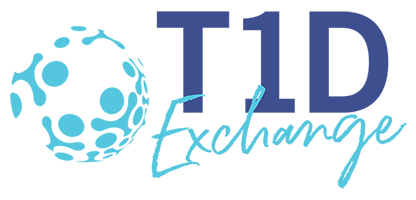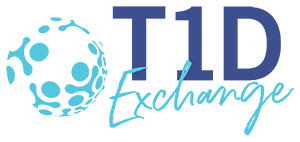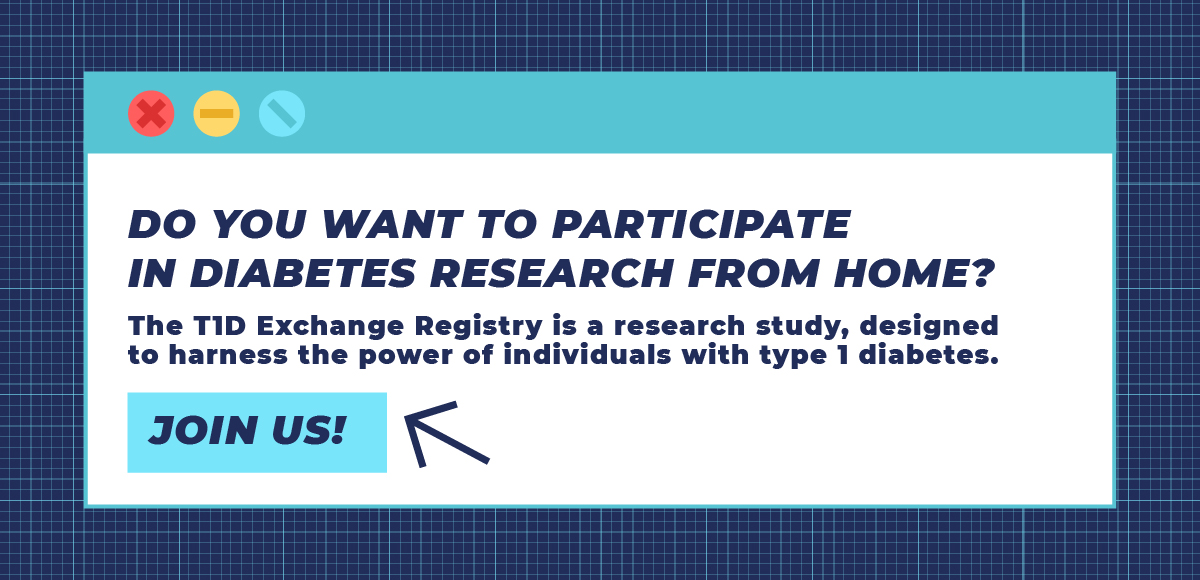
Sign up for a new account.
And get access to
The latest T1D content
Research that matters
Our daily questions
Sign up by entering your info below.
Reset Your Password
Don't worry.
We will email you instructions to reset your
password.
Those of us living with type 1 diabetes (T1D) hear a lot about the destruction of insulin-producing beta cells — but rarely does anyone discuss the other hormones we don’t produce thanks to our immune system’s attack on islet cells.
In November, Ginger Vieira described how beta cells are responsible for producing both insulin and amylin. This month, we delve deeper and explore the other key cells impacted by the autoimmune attack that causes T1D, thanks to research and insights from Claresa Levetan, MD.
Inside the Islets
Beta cells are only one of the five cells inside the Islets of Langerhans (islets). Islets are clusters of pancreatic cells, with each islet containing up to a few thousand endocrine cells. The autoimmune attack of the beta cells results in islet death, too. Unfortunately, too often the terms beta cells and islets are mistakenly used interchangeably.
Pancreatic islets contain alpha, beta, gamma, delta, and epsilon cells. These five cells communicate constantly within the islets to secrete six hormones that maintain blood glucose levels within a very narrow range in those living without T1 or T2 diabetes.
Islets cells and their roles
| Cell | Hormone(s) produced | Role |
| Alpha | Glucagon | Raises the concentration of glucose in the bloodstream. In a healthy islet, glucagon is suppressed after a meal and rises immediately when the glucose is dropping, which is why it is given in hypoglycemic emergencies. |
| Beta | Insulin
|
In a healthy islet, insulin is secreted within 60 seconds of the time a carbohydrate is eaten, in the exact amount required to maintain glucose levels under 120 mg/dL. Insulin stimulates glucose uptake by the liver, skeletal muscle, and adipose tissue. |
| Amylin | Co-secreted with insulin in equal concentrations. Amylin has several functions, including binding to brain receptors to stimulate feelings of fullness when eating. Amylin also suppresses glucagon release, thereby preventing hyperglycemia after eating. In both type 1 and 2 diabetes, glucagon is not restrained after meals. | |
| Gamma | Pancreatic polypeptide (PP) | Insulin stimulates the release of PP, an important regulator of glycogen storage in the liver. PP has been shown to enhance insulin sensitivity and reduce insulin requirements in people with T1D on pumps. |
| Delta | Somatostatin | Inhibits the secretion of both glucagon and insulin to maintain glucose homeostasis. |
| Epsilon | Ghrelin | Stimulates appetite, increases fat storage, and stimulates growth hormone release from the pituitary gland. Abnormal ghrelin secretion has been shown in new-onset type 1 diabetes. |
The Non-Compliant Pancreas
Postmortem evaluations on people with T1D and T2D both show a loss in the number of beta cells and a reduction in the number of islets and islet mass. See where this is leading? Due to human physiology, insulin alone cannot restore entire islet function to achieve “normoglycemia.” Once the beta cells die, the communication within the islets becomes dysfunctional.
Given only insulin, people with T1D experience first-hand that maintaining blood glucose levels “in range” is a time-consuming, challenging job. And yet, when people with T1D have difficulty managing their blood glucose levels, doctors and society are quick to blame the patient; but as Dr. Levetan says: “It is the pancreas that is non-compliant, not the patient.”
Consider that, in those living without diabetes:
- 80% of all recorded blood glucose levels are in the 60 to 100 mg/dL range
- 95% of all post-prandial blood glucose measurements have a mean peak of less than 121mg/dL
- An A1C above 5.5% significantly increases microvascular complications and macrovascular morbidity and mortality
Relatively few living with T1D can meet all three normoglycemia criteria above. With only insulin, food choices, and exercise — and even with new semi-automated insulin pumps and CGMs — people with T1D cannot be expected to mimic the intricate communication of the five islet cells 24 hours/day.
Imagine running today’s automobile on fuel and engine oil alone. No coolant, no transmission fluid, and no brake fluid. How well would that car run, and for how long? That’s akin to what is expected of many people with T1D: to run the pancreas well on fuel (food) and engine oil (insulin) alone. There should be no shame in using other medications to compensate for your body’s inability to properly produce all six critical hormones.
Our Options
In 1921, over 100 years ago, Dr. Frederick Banting isolated insulin, with several options now available. Eighty-four years later, in 2005, Symlin (pramlintide) was FDA-approved for T1D patients to mimic amylin. Nothing else on the U.S. market is FDA-approved to help mimic other islet hormones in T1D patients. (Unfortunately, Symlin’s side effects and general instability have prevented it from becoming very popular. It also requires multiple daily injections with meals.) Devices like insulin pumps and CGMs have made the hour-by-hour management of T1D more bearable, but they’re not direct treatments.
T2D patients, however, have several options including biguanides (e.g., metformin), incretin mimetics (e.g., GLP-1s), and SGLT2 inhibitors. Some endocrinologists prescribe these therapies off-label to those with T1D, under informed consent and with success; but these may not be covered by insurance, becoming cost-prohibitive.
Recent U.S. studies of GLP-1 use in T1D management show great promise: two studies indicated that there were no major trends in negative outcomes among people with T1D who received GLP-1 with insulin therapy: HbA1C, body weight, and insulin doses were more effectively reduced than with insulin alone. And while there was an increased risk of hypoglycemia, the authors noted that hyperglycemia with ketosis was seldom, and without ketoacidosis.
- WATCH: Ginger Vieira discusses using Ozempic in this Instagram Reel.
- READ: 4 People with T1D share their experience using Ozempic & Trulicity
Although we’d prefer a cure, people with T1D may soon have more therapies available to better manage blood glucose directly. In the meantime, as you balance your insulin (and maybe amylin), food choices, and exercise, channel Dr. Levetan:
“Your pancreas is non-compliant, not you.”
•••••
Sources
- Levetan, Claresa. (2010), Distinctions between islet neogenesis and β-cell replication: Implications for reversal of Type 1 and 2 diabetes. Journal of Diabetes, 2: 76-84.
- Levetan, Claresa & Pierce, Susan. (2012). Distinctions Between the Islets of Mice and Men: Implications for New Therapies for Type 1 and 2 Diabetes. Endocrine practice: official journal of the American College of Endocrinology and the American Association of Clinical Endocrinologists. 19. 1-36.
- Levetan, Claresa. (2022), Frederick Banting’s observations leading to the potential for islet neogenesis without transplantation. Journal of diabetes. 14, 2: 104-110.
- Rabiee A, Galiatsatos P, Salas-Carrillo R, et al. (2011), Pancreatic polypeptide administration enhances insulin sensitivity and reduces the insulin requirement of patients on insulin pump therapy. J Diabetes Sci Technol. 5:1521-1528.
- Holdstock C, Ludvigsson J, Karlsson FA. (2004), Abnormal ghrelin secretion in new-onset childhood Type 1 diabetes. Diabetologia. 47: 150–1.
- Diabetes Control and Complications Trial (DCCT): results of feasibility study. The DCCT Research Group. Diabetes Care. 1987 Jan-Feb;10(1):1-19. doi: 10.2337/diacare.10.1.1. PMID: 2882967.
- Dejgaard, TF, von Scholten, BJ, Christiansen, E, et al. (2021), Efficacy and safety of liraglutide in type 1 diabetes by baseline characteristics in the ADJUNCT ONE and ADJUNCT TWO randomized controlled trials. Diabetes Obes Metab. 23( 12): 2752- 2762.
Cristina Jorge Schwarz
Related Stories
8 Comments
The Six Dysfunctional Hormones of Type 1 Diabetes Cancel reply
You must be logged in to post a comment.








Most excellent piece of technical writing I have seen in years. Great metaphors and comparisons. And I absolutely delighted in the use of the word “normoglycemia,” as well as the statistics, numbers, and citations. Keep up the good work. 👍👍👍
Thank you so much, @Ahh Life. I give Dr. Levetan the credit for being a great teacher when I was first diagnosed. Please share it with others!
I agree with AhhLife! Thank you for this fantastic article! There is a lot of great information in here that I was not aware of.
Thank you also for Dr. Levetan’s words: “It is the pancreas that is non compliant, not the patient.” That shift of perspective is so helpful to me. 😀
Her perspective is so important to me, too. Because while we are non-compliant sometimes, we’re human! The rest of the time, though, no matter what we do, there are too many variables to control well for 24/7. Especially when we don’t have access to all the tools.
What symptoms are associated with damage to other Islet cells? I’ve been T1D for almost 7 yrs, but I haven’t noticed any other issues. When will those start?
I had issues, classic symptoms, for about 3-4 months during the first few months of #1s life (in 2016) – I had no idea why I was so fatigued. I thought it was just new Parent issues; it wasn’t until I stepped on the scale and saw 150 that I knew something was wrong. I’m 6′-1″ and normally 175-180; I’d lost 30 lbs in those few months. We initially thought it was Cancer; I hate to be thankful it was T1D, but that’s the reality. We now have 5 kids under 7, so I have to manage my Diabetes pretty well – I really don’t have a choice b/c there’s barely time to think.
I often feel very tired, but I push through. Is that just a result of having 5 little kids and a crazy life, or is something else going on? I work out regularly, and it always wears me out (I run 7-10 miles a week b/c I’m helping my wife train for a half, and I ride about 30). Am I able to work out b/c I’ve only been T1D for 7 yrs. and I was very healthy and active before 2016; am I still in a honeymoon phase? What other things can I do to promote Pancreatic health? Are there drugs, like some of the T2D drugs, that help the pancreas with Glucagon, Amylin, PP, Somatostatin, & Ghrelin? Until now, I’d only heard of Glucagon (obviously).
Michael, I encourage you to read the article again, and especially the full table (scroll left to view in its entirety), because many of your questions are answered in there!
The severity and progression of the autoimmune attack vary from T1 to T1 – each of us is different. That being said, the other symptoms you ask about are, for example, lack of satiety (no amylin), frequent hunger (dysregulation of ghrelin), increased basal insulin needs and post-prandial spikes (dysregulated glucagon from the liver), and more.
Now, many T1s exercise for decades! Exercise is one of the tools we can use to compensate for those other
missing hormones – it reduces hunger, the need for insulin and insulin resistance, and more. Keep with it. Discuss the fatigue with your endo, too.
Honeymoon phase: that’s a question for your endo, I think a c-peptide test can answer that better than I!
Finally, please read the Our Options section of the article for more about drug availability. Advocate for yourself; bring the article with you for a conversation with your endocrinologist!
THANK YOU! THANK YOU! THANK YOU! I have been so so so sickened by arrogant jerkholes acting like they know what I need/am doing wrong/ect. I’ve been t1d since 8 yrs old and my older brother has it too. He got it at 9 (We’re 5 yrs apart). He sent me this article, not knowing I actually just had a huge turmoil with some co-workers over this and it helps so so much!! I believe the Universe is letting me know I’m valid in my reaction and choice to separate myself from working with them anymore. Perfect timing because I was feeling so lost with no way to explain. I can’t tell you how exactly PERFECT your words are in my situation right now. Thank you for helping me feel ok about standing up for myself and giving me something I can show to back myself up. I’m so glad you were inspired to write it and that my brother was inspired to send it! I hate doom and gloom articles, so he doesn’t usually send me anything td1 related. Can’t thank you and the Universe enough right now! A weight has been lifted. Keep up the excellent work! You really made a difference in my life today. Thank you thank you thank you! 💓💓💓
@WVann Never stop advocating for yourself, please! Print/forward this article to your managers and others to help explain life with T1.
You made a difference in my life today, too – thank you for your kind words. 🙏
I wish you and your brother all the best on your T1D journeys.